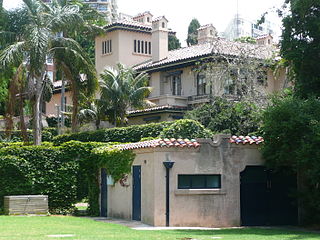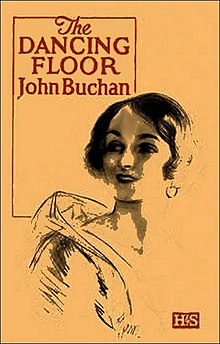
In ancient Greek mythology and religion, Persephone, also called Kore or Cora, is the daughter of Zeus and Demeter. She became the queen of the underworld after her abduction by and marriage to her uncle Hades, the king of the underworld.

Elefsina or Eleusis is a suburban city and municipality in the West Attica regional unit of Greece. It is located in the Thriasio Plain, at the northernmost end of the Saronic Gulf. North of Elefsina are Mandra and Magoula, while Aspropyrgos is to the northeast.

John Buchan, 1st Baron Tweedsmuir was a Scottish novelist, historian, and Unionist politician who served as Governor General of Canada, the 15th since Canadian Confederation.

Hellenism in a religious context refers to the modern pluralistic religion practiced in Greece and around the world by several communities derived from the beliefs, mythology and rituals from antiquity through and up to today. It is a system of thought and spirituality with a shared culture and values, and common ritualistic, linguistic and literary tradition. More broadly, Hellenism centers itself on the worship of Hellenic deities, namely the twelve Olympians.

"The Call of Cthulhu" is a short story by American writer H. P. Lovecraft. Written in the summer of 1926, it was first published in the pulp magazine Weird Tales in February 1928.

Boldt Castle is a major landmark and tourist attraction in the Thousand Islands region of the U.S. state of New York. Open to guests seasonally between mid-May and mid-October, it is located on Heart Island in the Saint Lawrence River. Heart Island is part of the Town of Alexandria, in Jefferson County. Originally a private mansion built for American millionaire George Boldt, it is now maintained by the Thousand Islands Bridge Authority as a tourist attraction.

Spetses is an upscale affluent island in Attica, Greece. It is included as one of the Saronic Islands. Until 1948, it was part of the old prefecture of Argolis and Corinthia Prefecture, which is now split into Argolis and Corinthia. In ancient times, it was known as Pityussa.
There is a body of ancient and modern fiction set in ancient Greece and ancient Greek culture, including Magna Graecia and Hellenistic kingdoms. Titles include:
Sousta is a Greek folk dance, performed at weddings as an activity of courtship between husband and wife. It originates from Ancient Greece, and holds prominence in Dodecanese Islands, and broader Aegean region. It is the second most common Greek dance, after the Syrtos, with many Greek islands and villages adopting their own version. The performance of the dance reflects various gender roles, inter-played with values of romance and marriage. The Sousta acted as a socialisation process between the youth of a village, evolving into a dance central to these youth as they grew up and formed relationships with others. Socially, the Sousta also functioned as a visible verification of courtship, namely paying respects to the wife and her family. The Sousta is most commonly performed as a three-step dance, with a 'hopping' motion and crossed-over hands.
Greek love is a term originally used by classicists to describe the primarily homoerotic customs, practices, and attitudes of the ancient Greeks. It was frequently used as a euphemism for both homosexuality and pederasty. The phrase is a product of the enormous impact of the reception of classical Greek culture on historical attitudes toward sexuality, and its influence on art and various intellectual movements.
'Greece' as the historical memory of a treasured past was romanticised and idealised as a time and a culture when love between males was not only tolerated but actually encouraged, and expressed as the high ideal of same-sex camaraderie. ... If tolerance and approval of male homosexuality had happened once—and in a culture so much admired and imitated by the eighteenth and nineteenth centuries—might it not be possible to replicate in modernity the antique homeland of the non-heteronormative?

The Barnacle Historic State Park is a 5-acre (2.0 ha) Florida State Park in the Coconut Grove neighborhood of Miami, Florida at 3485 Main Highway.
"The Black Stone" is a horror short story by American writer Robert E. Howard, first published in the November 1931 issue of Weird Tales. The story introduces the mad poet Justin Geoffrey and the fictitious Unaussprechlichen Kulten by Friedrich von Junzt. The story is part of the Cthulhu Mythos, and follows the same pattern and has the same features as much of H. P. Lovecraft's classic work.

Koufonisia is a former community in the Cyclades, Greece. Since the 2011 local government reform it is part of the municipality Naxos and Lesser Cyclades, of which it is a municipal unit. The municipal unit has an area of 26.025 km2.

The Museum of Classical Archaeology is a museum in Cambridge, England, housed in the Faculty of Classics of the University of Cambridge. Since 1983, it has been located in a purpose-built gallery on the first floor of the Faculty of Classics on the Sidgwick Site of the university.

Boomerang is a heritage-listed private house and garden located at 42 Billyard Avenue in the inner eastern Sydney suburb of Elizabeth Bay, in the City of Sydney local government area of New South Wales, Australia. The house was designed by Neville Hampson and the gardens and grounds by Max Shelley, and built from 1926 to 1928.
Shake, Rattle & Roll II is a 1990 Filipino horror anthology film and the second installment of the Shake, Rattle & Roll film series. The film was distributed by Regal Films and is directed by Peque Gallaga and Lore Reyes. The film is an entry of the 1990 Metro Manila Film Festival. It is the first starring role of Manilyn Reynes before the following sequels. The third installment, Shake, Rattle & Roll III, was released in 1991.

The Phrasikleia Kore is an Archaic Greek funerary statue by the artist Aristion of Paros, created between 550 and 540 BCE. It was found carefully buried in the ancient city of Myrrhinous in Attica and excavated in 1972. The exceptional preservation of the statue and the intact nature of the polychromy elements makes the Phrasikleia Kore one of the most important works of Archaic art.
Seven Against Greece is the twenty-fifth novel in the long-running Nick Carter-Killmaster series of spy novels. Carter is a US secret agent, code-named N-3, with the rank of Killmaster. He works for AXE – a secret arm of the US intelligence services.

The Invisible Girl is a Gothic tale written by Mary Shelley and first published in The Keepsake for 1833. The tale is set in Wales, and tells the story of a young woman named Rosina, who lives with her guardian, Sir Peter Vernon, and is secretly engaged to his son, Henry. Henry is away from home when their relationship is discovered, and Sir Peter casts Rosina out of the house. Sir Peter regrets his harshness and searches for her, but assumes she is dead when she cannot be found. Henry returns home to the news of Rosina's death and is heartbroken. He joins the search for her body, and the villagers tell him about the Invisible Girl, a ghostly figure who wanders the woods at night. Henry finds Rosina hiding in a remote ruin and discovers that she is really the Invisible Girl. Sir Peter forgives them for their secret engagement, and they are married.

The Watcher by the Threshold, and other tales is a collection of early novellas and stories, most with supernatural elements, by the Scottish author John Buchan. When first published in the UK in 1902 the collection included five stories, mainly set in the Scottish Borders. The collection was republished for the US market in 1918 under the title The Watcher by the Threshold, with four of the original stories and four new ones.















